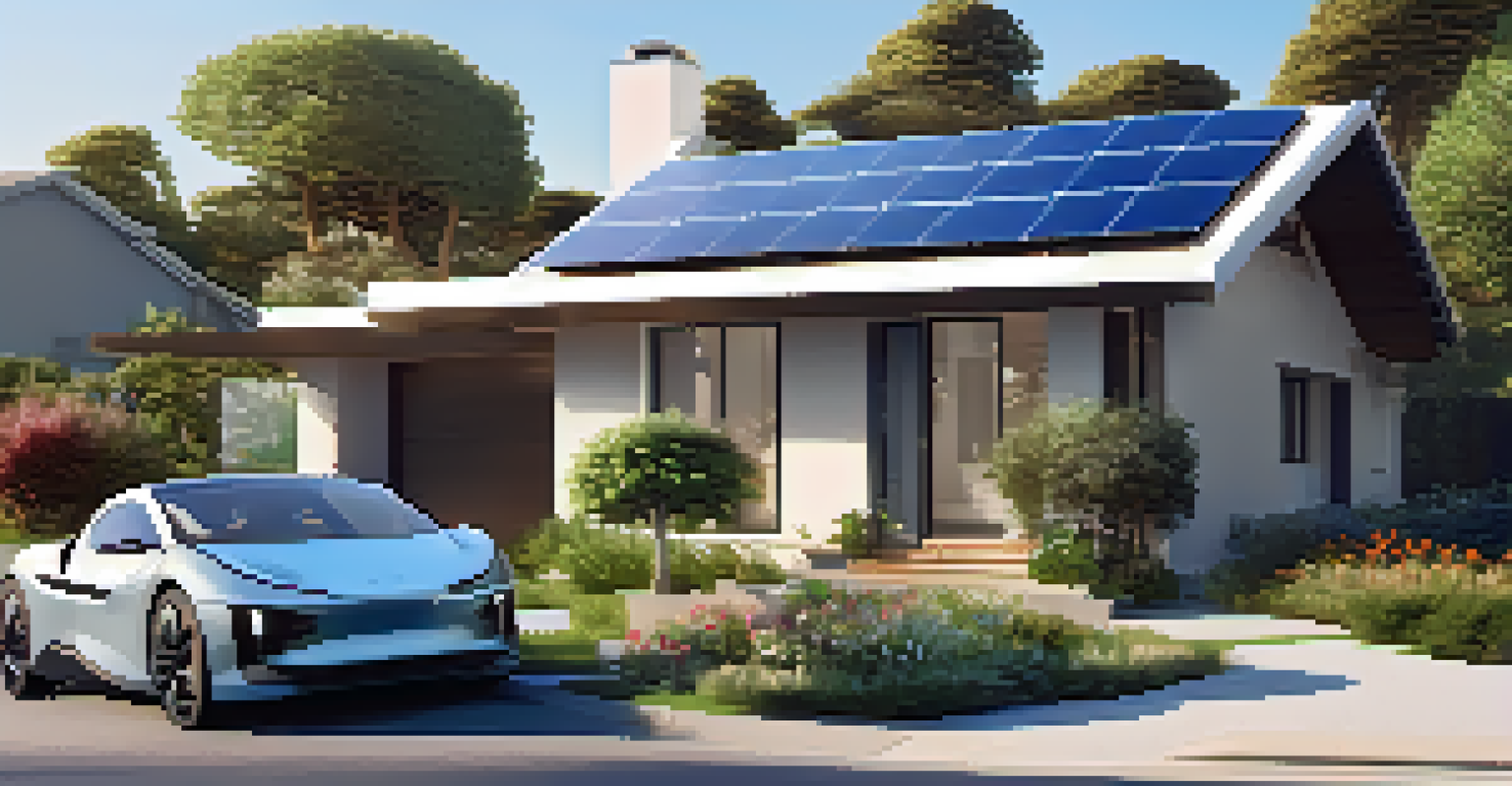Understanding Federal Tax Credits for Energy Efficiency in 2023

What Are Federal Tax Credits for Energy Efficiency?
Federal tax credits for energy efficiency are incentives offered by the government to encourage homeowners and businesses to invest in energy-saving upgrades. These credits reduce the amount of federal income tax you owe, making it more affordable to adopt eco-friendly technologies. By taking advantage of these credits, you can not only save money but also contribute to environmental sustainability.
The greatest threat to our planet is the belief that someone else will save it.
The types of improvements that qualify vary widely, from solar panel installations to energy-efficient windows and HVAC systems. Each credit has specific eligibility criteria, which can include the type of product, its energy efficiency rating, and the date of installation. Understanding these requirements is crucial to maximizing your savings.
In 2023, there has been a renewed focus on promoting energy efficiency, with various credits available to help offset the upfront costs. This initiative aims to reduce energy consumption and greenhouse gas emissions, aligning with broader climate goals. So, if you're considering an upgrade, now might be the perfect time to explore your options.
Key Federal Tax Credits Available in 2023
In 2023, several key federal tax credits are available for energy-efficient home improvements. For instance, the Residential Energy Efficiency Property Credit allows you to claim a percentage of the costs for solar energy systems and other renewable energy technologies. These credits can significantly reduce the overall cost of installation, making it a smart investment.

Another popular credit is the Energy Efficient Home Improvement Credit, which covers a range of upgrades like insulation, energy-efficient windows, and doors. This credit encourages homeowners to enhance their homes' energy performance, ultimately leading to lower utility bills. Understanding which upgrades qualify can help you plan your home improvement budget more effectively.
Federal Tax Credits Encourage Upgrades
These incentives make it more affordable for homeowners and businesses to invest in energy-saving technologies.
It's important to note that these credits are subject to limits and expiration dates, so staying informed about the latest regulations is key. The IRS provides guidelines on what improvements qualify, and keeping track of these changes can ensure you take full advantage of available benefits. Consulting with a tax professional can also help navigate these complexities.
Eligibility Requirements for Tax Credits
To qualify for federal tax credits for energy efficiency, you must meet specific eligibility requirements. First, the improvements must be installed in your primary residence, and they typically need to meet certain energy efficiency standards set by the government. This ensures that only products that genuinely contribute to energy savings are eligible for credits.
Sustainability is no longer about doing less harm. It’s about doing more good.
In addition to location and standards, there are often financial limits on how much you can claim. For example, some credits might have a maximum dollar amount you can receive, while others may limit the percentage of your total costs. Keeping thorough records of expenses and installation is crucial for substantiating your claims when you file your taxes.
Furthermore, it's essential to ensure that the products you purchase come with the proper certification. Many manufacturers provide documentation that verifies their products meet the necessary criteria. Always save these documents, as you may need them when claiming your credits during tax season.
How to Claim Federal Tax Credits
Claiming federal tax credits for energy efficiency is a straightforward process, but it does require some preparation. Start by gathering all necessary documentation, including receipts for the purchase and installation of qualifying products. This will not only help establish your eligibility but also ensure you have everything needed for a smooth tax filing experience.
When filing your federal income tax return, you’ll need to complete specific forms that correspond to the credits you're claiming. For instance, Form 5695 is commonly used to claim residential energy credits. It's important to fill out these forms accurately to avoid delays or complications with your tax refund.
Eligibility and Documentation Matter
Understanding the specific requirements and keeping thorough records is crucial to successfully claiming these tax credits.
If you're unsure about the claiming process or have questions about specific credits, consider consulting a tax professional. They can provide personalized guidance and help you navigate the often-complex tax code. This can save you time and ensure you're making the most of the available credits.
Impact of Tax Credits on Home Value
One of the often-overlooked benefits of federal tax credits for energy efficiency is their potential impact on your home's value. Upgrading to energy-efficient systems and appliances can make your home more attractive to future buyers, especially as energy costs continue to rise. Many buyers are willing to pay a premium for homes that promise lower utility bills and reduced environmental impact.
In some cases, energy-efficient upgrades can lead to a return on investment (ROI) well beyond the initial costs. For example, installing solar panels may significantly increase your home's resale value and appeal. A home with modern energy-efficient features is often viewed as more desirable in the real estate market.
Moreover, with increasing awareness of climate change and sustainability, homes with energy-efficient upgrades are becoming more sought after. This trend suggests that investing in energy-saving improvements could not only save you money in the short term but also enhance your property's long-term value.
The Importance of Sustainable Choices
Choosing energy-efficient upgrades isn't just about saving money on taxes; it’s also a step toward a more sustainable lifestyle. By investing in energy-efficient technologies, you contribute to reducing your carbon footprint and overall energy demand. This is crucial as we face the pressing challenges posed by climate change.
Sustainable choices promote the use of renewable resources and energy-saving solutions, ultimately benefitting the environment. For instance, installing solar panels harnesses the sun's energy, which is a clean and renewable source. Every small change can collectively lead to significant environmental benefits, creating a ripple effect in your community.
Sustainable Choices Enhance Home Value
Investing in energy-efficient upgrades not only saves money but can also increase your home's resale value.
In 2023, federal tax credits make these sustainable choices more accessible for many homeowners. By taking advantage of these credits, you're not only making a financially sound decision but also supporting a larger movement towards a greener future. It’s an investment in both your home and the planet.
Staying Informed About Future Tax Credits
As federal tax policies evolve, staying informed about future tax credits for energy efficiency is essential. Regularly checking the IRS website and following reputable resources can help you keep track of any changes or new incentives that may arise. This proactive approach ensures you won’t miss out on potential savings.
Additionally, subscribing to newsletters from energy efficiency organizations or local utility companies can be beneficial. These resources often provide updates on available programs, rebates, and changes in tax legislation that affect energy-efficient upgrades. Knowledge is power, and being informed empowers you to make better financial decisions.

Lastly, engaging with local community groups focused on sustainability can provide valuable insights. These groups often share experiences and tips on maximizing benefits from federal tax credits and other incentives. Building a network around energy efficiency can keep you motivated and informed on the best practices for your home.